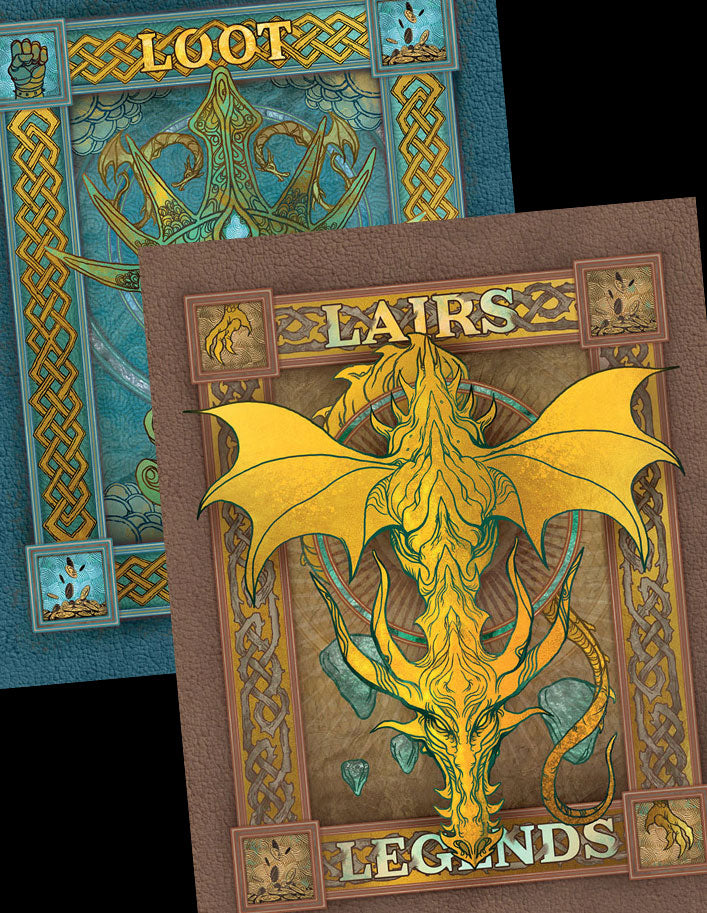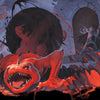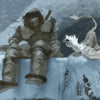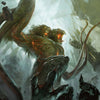What Makes a Good D&D Adventure?
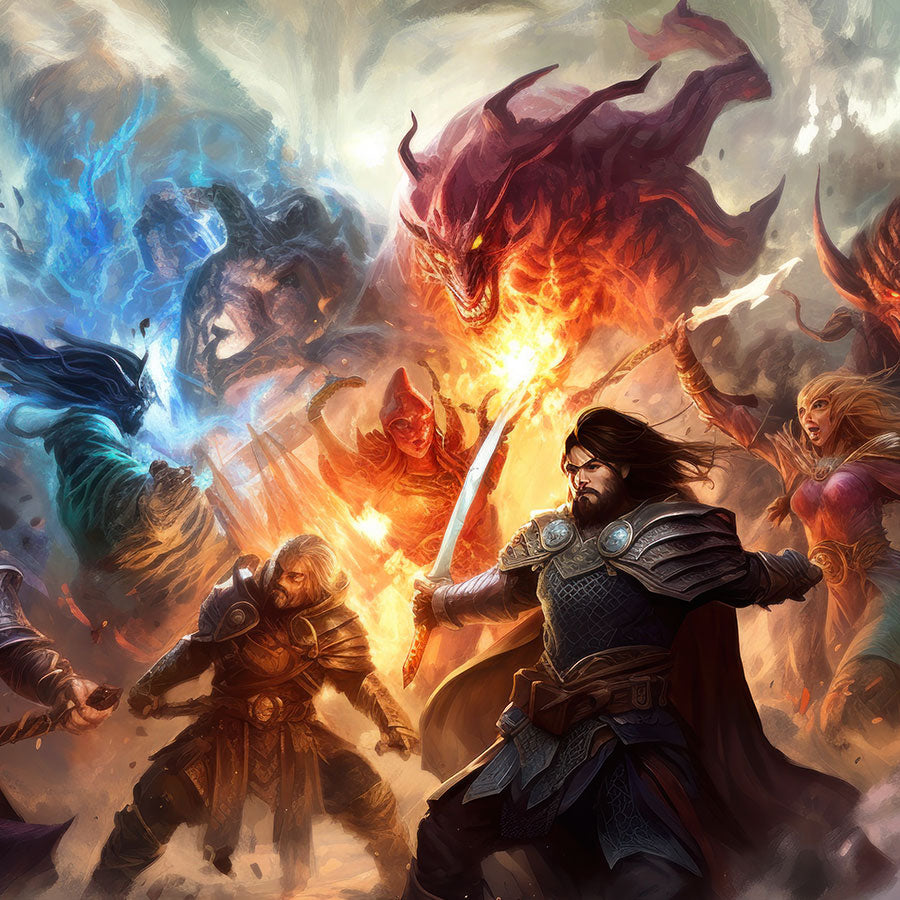
Today we're discussing 16 critical things every good D&D adventure has. Actually, if you do about half of these, you'll probably be fine. However, I personally try to hit almost every single one of these things in the adventures that I create.
Watch or listen to this article by clicking the video below.
Number 1: A Compelling Story
No matter what you do, no matter how awesome your encounter designs are and all the other little bits you have going on in your adventure, if your story absolutely sucks, if the plot, the scene, the overall scenario, the stuff you got going on there is just absolutely boring and dull and people have seen it a thousand times and you got nothing interesting going on, your adventure's probably not going to be that great. You want to have a compelling scenario set up. One of the things that I do in the adventures that I create and the adventures that we publish in Lair Magazine is that we have a background to the adventure.
There's an entire description, several paragraphs long that explains what's going on in the adventure. It explains why the bad guy is doing bad things, all that good kind of stuff. It gives you the context that makes the story what it is. It puts interesting stuff in there so that you can run a compelling, awesome adventure. And when you have these backgrounds set up in your adventures, it also allows you to have that context so that as you're running the adventure at your table, you can reveal those things organically to your players as they come up. Now, as far as what makes an interesting adventure, I think that's going to vary from person to person, and I probably can't give you some tips, at least not in this video, about what it takes to make a story interesting. You're just going to have to use your own brain and creativity to work on that sort of thing.
But what I can tell you is that as you're running the adventure at your game table, the story should be developing. The players should be learning more about what is going on. You as the dungeon master should be revealing more to them about that backstory, about that context, so that things perhaps aren't what they seem, or you're escalating things little bit by little bit as the adventure takes place. So to give you an example from one of my games, my Pathfinder 2 group is currently playing in the Eberron game system, Pathfinder and Eberron. I know it doesn't, but it's working great and I love it. And their very first adventure, they had to investigate a problem at a bank. Essentially, there was some shadowy shady figures off in the background that the NPC quest giver suspected their patron house, Kundarak suspected was going to do a heist on the bank, and they had to investigate, find out who it was and stop them.
So, they did some sleuthing around and they discovered that there were actually some goblins that were behind it all. They tracked their base down and then they figured, hey, we got goblins. They're going to do a heist on the bank. This is very simple. We're just going to kill all the goblins and be done with it. But as they delved into that base, they discovered more about these goblins. They discovered that these goblins were actually from Droaam, a nation quite a ways away from our holes where the adventure was taking place. And the goblins were also led by a werewolf, which is a little bit odd of a combination to go with goblins. And they also learned toward the end of this adventure that this band of goblins led by this werewolf were seeking something known as the Cauldron of Chaos. And my entire point there is just that I took what could have been a simple adventure of stop the goblins from stealing from the bank and kill them, and I turned it into a story that unveiled itself more and more as they adventured and they found out more of who was behind it and what was going on.
And that of course, obviously led into further adventures that they're going to be going on eventually, they're probably going to have to go to Droaam, my players, if you're watching this stop or just skip a little bit here and figure out what exactly is going on, who's behind it all, and what is this Cauldron of Chaos. So I think a compelling story is oftentimes more than what it seems on the surface level, and as the adventure unfolds, the players should discover more about it. In movie parlance or book writing parlance, you might call that a twist, but at the end of the day, even if you don't have a twist, there should be a story that drives the adventure forward and compels the bad guys to action. There should be a reason behind it all. By the way, I'm going to be using lots of examples today for my Thieves Abound Pathfinder 2 campaign, and if you'd like to watch those games, I've included a link to the playlist down below.
Number 2: A Good Plot Hook
An adventure without a good plot hook is an adventure at risk of being ignored by the players. And every good plot hook has three parts to it. First, there needs to be a clear, objective or goal. You want your players and their characters to know exactly what they need to do. Do not beat around the bush. Do not be vague or nebulous about it. Make sure they know exactly what the goal is. Number two, you want to have a motivating factor for the characters or the players. You want them to be motivated to want to go on the adventure, and you can appeal to the characters, you can appeal to their backstories. You can appeal to some of the different things, like if you have a halfling who just wants to steal stuff, who wants to get rich, you can appeal to that.
You can also appeal to your players. You know what your players like. If your players love exploration, well, you can play on that. A plot hook doesn't just need to appeal to characters because there are players behind those characters. When you appeal to both, you have an even higher chance of your players and their characters going along and doing the thing that you were trying to hook them on. And number three is that you need to have information on how or where to get started. You need to push the characters and their players out of the nest. You do not want them to wander around aimlessly in the game world being like, well, we know what we got to do. We want to do it, but we have nowhere to start. We don't know where to go and where to start, and they're just going to wander around.
So don't want that to happen, right? Give them that information in the plot hook and how you deliver your plot hook doesn't really matter. It could be your standard NPC quest giver with a little explanation mark above their head. I think it's a question mark, whatever. It could be a piece of paper that they find a letter from another villain they just defeated. There is a plethora of ways that you can deliver plot hooks, but every good plot hook has those three elements.
Number 3: An Intriguing Villain or Big Bad
There should be something about the villain that sets them apart and makes them unique. What that is might vary, and it might vary according to your tastes and the tastes of your players.
For instance, in my Pathfinder 2 campaign, Thieves Abound, they fought an undead priestess of the Emerald Claw who when they killed her would then reform. There were some statues all about the final boss room, and these statues were all holding bowls of water, and every time they killed the priestess, this bowl of water from one of the statues, the water would spray up on the statue and turn the statue into another iteration of that priestess who would keep on attacking and casting spells at them. They had to go around the room and knock over the bowls of water to stop the priestess from reforming every single time. I think they fought probably five iterations of her before they were finally able to disrupt the other statues. And so that was an interesting and unique combat aspect of that villain, but it doesn't have to just be a combat aspect. For instance, in that same campaign, they fought a Chimera at level two.
So, there's no way they could fight a creature level eight at level two. What I did is I made this Chimera and old Chimera, it was like aging. The scales were falling off. There were patches of fur that were coming off from the lion head that were gone. You could just tell this thing was old, its leathery wings were just old wrinkled leather. And this thing flew up, and one of my players, I think it was Joe, was like, oh, cool, we get to fight a geriatric Chimera. And so it was much weaker and they were actually able to defeat it, even though it still posed a pretty big challenge to them. So in that case, the boss of that adventure, the villain, was interesting and unique because it's this old Chimera that's all rickety and heart. It's like you can imagine this thing that's flying with a cane or something, but that was what made it unique.
I don't know that flying with a cane would help a whole lot. Another thing about villains is that they should also be the key to the stakes. In other words, success can't be achieved without defeating them or stopping their nefarious plan. Even if the villain doesn't have to be captured or killed, defeating them and overcoming them in the adventure it needs to be done. What is the point of having a villain if you can just ignore them and still accomplish your goal?
For instance, in the Chimera example, they had to fight the Chimera that was planned, that was going to take place. However, they didn't have to fight all the kobolds. Many of the kobolds escaped actually convinced some of them to leave and they went somewhere else. So those kobolds are still on the loose. Those kobolds might get up to trouble in the future, but the boss, the Chimera, that key element that was encountered and they had to overcome it.
Number 4: A Subservient Lieutenant
And what we mean here is that there should be an enemy, a lieutenant that is subservient to the big bad, but is not the main villain. And these lesser bosses should also be intriguing with their own personalities, motivations, and tie to the stakes.
For instance, in my Pathfinder 2 campaign, Thieves Abound, I mentioned there was this chimera, right, this geriatric chimera, and there were a bunch of kobolds, but there was also a Spellcaster Kobold who was leading the other kobolds. She was the lieutenant, and my player's characters confronted her and they defeated her through conversation. They literally convinced her to leave with some of the other kobolds and go somewhere else, and they gave her a big pot of copper pieces, her shinies to help convince her, and she left. So they didn't fight her, but they did confront her, and she had her own motivation to desires as well, so she was unique on her own.
Furthermore, the lieutenant should foreshadow the big bad in some way and should advance the rising tension even when defeated. For instance, from that same campaign, this Kobold Spellcaster gave the character some information about why they were stealing ghosts. She mentioned that they were bringing him as an offering to their god figure, which I sort of implied was a dragon, though I didn't explicitly state it, of course. But the point here is that I was advancing that tension in the adventure in the story by letting my players know that there was something powerful awaiting them further on in that dungeon that they would have to take care of foreshadow, raise the tension. Oh, and by the way, these points about creating an intriguing, big, bad, and a lieutenant can be applied to both your individual adventures and to the entire campaign. For instance, that werewolf I mentioned previously, well, that werewolf was the big bad of that adventure, but only a lieutenant of the entire campaign.
I'm not going to tell you who the actual big bad is of the campaign because my players might be watching this video, but just trust me
Number 5: A Twist
At some point in the adventure, the scope, direction or expectations of the adventure should change or be challenged. For example, in that campaign that I've been talking about, this whole video, when they were in the Kobold lair talking with the kobolds, I made it seem like there was a dragon in the dungeon that the kobolds were feeding, but as we know, it was actually a chimera. And then the second twist that I worked in was that it was an aging chimera with scales that were flaking off and gray in its mane and all that kind of stuff, wrinkles on the wings and all that good junk.
Whenever you can set up something where the characters know what they're up against, and then later on it turns out to be slightly different or perhaps completely different, and you upset those expectations, you make your adventures and your campaign that much more interesting.
Number 6: Enemies That Do More Than Just Attack
This is a pet peeve of mine, especially with official modules and adventure paths that I have seen, like there's bad guys in a room, and as soon as the characters kick the door down, what do the bad guys do? They draw their weapons, they gank their claws out and they attack. That's all it is. Bad guys that only ever attack, attack, attack, attack, attack, attack, this sort of adventure design is myopic. There are other things that players enjoy doing in the game besides just fighting all of the monsters.
Some of us like to talk with the monsters. Some of us like to maybe get some information out of them. If we can learn something about what's going on now, we're probably going to have to fight 'em and maybe even kill 'em and stuff like that, but give us some options here. Allow us the chance to extract information, allow us the chance for diplomacy, some social interaction. There are three pillars to the game, right? We have combat, we have exploration, and we have social interaction. When you just have enemies attack, you are taking away the possibility of social interactions. And if you have enemies that do more than just attack and you give an opportunity for social interactions and you give an opportunity for players to overcome encounters with their wits or other means, you are expanding the game, you are making the game much more interesting for your players and just having monsters that always attack.
So, make an effort to build enemies into your adventures that have motivations and means and reasons for doing stuff other than just attacking. No, sometimes enemies are just going to attack like an ooze just wants to eat you. A rust monster wants your sword or your armor. I get it, but intelligent enemies often have motivations that cause them to do different things such as talking to you besides just attacking.
For instance, when we create our adventures for Lair Magazine, we are very careful that when there are enemies in a room, we have, there are encounter notes, but there are also role-playing notes. We are giving guidance to the game master so that they know how to role-play those enemies, what they might say, what they might do, things that they can do besides just attacking. This is something that we are very, very hardcore about in our adventure design for our publications because we want to promote a different variety, more ways to play the game than just killing everything that you come across.
Number 7: A Piece of Lore
Include at least one piece of lore that can be discovered that informs the characters and the players about the game world. Either expanding the scope of the campaign or adding some nuance or revelation. And this might be something about the world's history or a famous moment in the world's history or a hero in the history, and it might point to something interesting like a location that the players don't know about and might want to explore. We talked about our three pillars, right? And this is going to stoke the fire of that exploration pillar in your players. Oh, there's this cool thing over here. Oh, there's this thing. Oh, interesting. We're learning more. And you do it in such a way that's organic to the game as well and doesn't feel like an information drop.
And if you do that little by little throughout your adventures and your campaign, you're going to be revealing more about your world, more about the interesting things and locations and stuff over the course of your campaign, over the course of your adventures, and your players are going to just organically pick it up and know more about it. That is going to be extremely satisfying more than likely as they learn about those things. For example, in my PF two game, Eberron is a new setting for most, if not all of my players. I believe. So in every adventure I am making an effort to add lore about the world. In the first adventure, I introduced the nation of Droam off to the west. In another adventure, I introduced the blood of Vol and the Emerald Claw, a religion in the world and a cult related to that religion.
And again, your goal is to introduce this lore organically without big information dumps. Lore should be relevant to the adventure at hand and what's going on. This makes your players actually care about it, especially if that lore and information helps them on that adventure in some way.
Number 8: Balance Among the Three Pillars
Alright, I already talked about what the three pillars are in this video. I'm not going to go over it again, but if you're interested in learning more about what the three pillars are, I do have a video on this pop topic, a specific dedicated video called The Three Pillars of a Successful D&D Game. You can go watch that video if you want more information.
What I'm going to tell you here is that those three pillars and including elements of all three pillars in your game, combat exploration and social interaction is extremely important. Different players have different interests. Different game masters have different interests, and the more types of content that you can put in, the better chances that your game is going to appeal to your players and there's going to be stuff from the different pillars that they're going to.
For instance, you might have a player who hates combat and loves exploration and social interaction. That's a talky talky bit, so if you have a variety of stuff in the game, your player is going to like your game because even if they don't like the combat, they know there's other parts that they are going to. However, if all you have is combat, that player is going to sit there and they're going to be bored. They're not going to enjoy it and they might just walk off.
The pillars are also important for pacing reasons. Combat is very high tension. It's very like adrenaline, like combat life. Our lives are on the line. Well, at least in some games your lives are on the line. I realize that there are lots of games where people can't die. However, if death is on the line, then combat is a very high tension moment, whereas exploration and social interactions tend to be lower tension moments, and there's an idea out there of modulating tension in your adventures and in your games where you have some moments that are high tension and other moments that are low tension where the players can relax a little bit and not be on edge, and that is good for pacing.
One of the things that you'll notice in games is if everything is high, high tension all of the time, your players need a break for that, and if you the game master, don't give them a break, they will take that break. Your players will literally start having side conversations or they'll make jokes or something to alleviate that tension for a brief moment.
Finally, each of your pillars should ideally do something to further the plot and drive the building tension of the adventure as a whole. For instance, in my Thieves Abound campaign, the first adventure was dealing with goblin spies from Droaam. These are the elements I included that balanced the three pillars, tracking down the mysterious figures around the bank, talking with the witnesses, investigating a house, and then they finally got a clue that led them to Glek Hollow. They spoke with the goblin mayor and got a tip about a new band of city goblins that had arrived to town.
In there we had social interaction and exploration, and then when they finally confronted the goblins, they found the first group of them that were just their cooking in their house, and they talked with them for a little bit social interaction, and then finally they did end up fighting them combat. Then they found the stairs down to their secret area and they got into a combat with goblins that were in a shrine of the dark six, and here I revealed some information about the dark six, one of the religions, group of religions, I suppose it's complicated and never on and what they all meant. Then they explored some more. They poked around, they found some secret doors exploration, they found a block trap and disabled it. That's some more exploration, the block trap that falls on you and just crushes you. Then they got into a fight with some more goblins and they found some prisoners in jail cells and they started talking with them, social interaction, they learned more about what was going on. Lore revealed. Finally, there was the boss fight with the werewolf, and that's when they TPK'd. But the point is, is that when I designed that adventure,
I was very cognizant of having balance among all of the pillars in the adventure so that it would appeal to my players and their different likes, preferences, and stuff that they enjoy in the game. Number nine, interesting encounters and combats. Encounters should never take place in a flat, empty, rectangular room. You want to have some stuff in there, some terrain, some furniture, a crevasse, put stuff in there to make the combat area more interesting. You also want a variety of enemies. You don't just have six goblins, but you have three goblin warriors, two goblin archers, and a goblin shaman, and you might encounter them at different ranges as well. The three goblin warriors are up here. The two archers are back here. The shaman is over here up on a ledge also, not every encounter should just involve monsters that are just conveniently standing there in their room waiting for an encounter to begin.
You have wandering monsters in dungeons. You have an entire dungeon ecology that should be at work. Monsters are doing stuff. They're not just sitting around, and if you want more information on building awesome encounters for your groups, for your games, I have a video on my channel called the Ultimate Encounter Creation Guide that you could check out.
Number 10: Variety of Encounter Difficulties
You want there to be a variation between easy, medium, hard, and deadly encounters or whatever terminology your particular game system happens to use, and you want a variety of encounters because it appeals to a variety of different player preferences. Some players want to have the chance to be heroic where they're just mowing things down. Other players want to be challenged where things are hard to obtain. Victory is not one easily, and there are other players who like to have sometimes they were heroic and they're just mowing things down.
Other times it's hard and there's that variety of challenge. Also, if everything is super, super easy, that can get boring, and if everything is super, super hard, that can become a grueling slog. This goes back to our idea of modulating tension, where the easy encounters are low tension and the hard encounters are high tension. By the way, if you're finding this information useful, please give me a thumbs up and share this video with others. One of the best ways you can help other game masters is by sharing helpful content, assuming this content is helpful, but if you made it this far, you're probably finding it helpful or autoplay is on and you just can't stop it for some reason.
Number 11: Escalation and Rising Action
This goes back to the idea of writing a book or a story or a movie where there is a beginning and middle and there's this rising action. There's this escalation over the part of the movie of the adventure of the story where the players are discovering more about what's going on and they're beginning to confront the challenges in the adventure.
Now, I'm not saying write your adventure like you would write a book or write a movie because games are different from books in movies. You're not telling a story, you're presenting a scenario and what your players and their characters do as a result of that scenario you set up. That's what results in the story, but you can still design your adventures to have this rising action throughout almost all movies, books in place follow the three-part format of the rising action, the climax, and then the falling action where you are wrapping everything up.
Almost all of them follow that because it is a tried and true method for creating a compelling story. Of course, the Last Star Wars movie, rise of Skywalker did not do that, and it was a trend wreck, but I've talked about that before. We're going to skip that today. That rant has already been done.
Number 12: Climax and Boss Fight
Somewhere toward the end of the adventure, you want to have your climax, and that usually involves encountering the big bad of the adventure, and it usually involves a final showdown fight. Now, it may be a fight in my games. It's usually a fight, but it doesn't have to be a combat. It could just be a social interaction or it could be a prolonged exploration element, but there should be a climax and it usually involves that final boss of the adventure, and if it's going to be a fight, it should be an epic fight.
If most of the fights in your adventure are easy to medium and difficulty, this boss fight should be hard. Most times my boss fights are very deadly and very challenging. By the way, if you want to know how to make awesome boss fights in your games. I have two videos on my channel, How to Make Epic Boss Fights in D&D Part One and How to Make Epic Boss Fights in D&D Part Two that you can check out. I do a deep dive into how to construct awesome boss fights.
Number 13: Resolution
Okay, yeah, after you fight your boss and you win all that kind of stuff, you want to go get your rewards, your gold, your magic items. You want to get your loot, but a great adventure also has a hook for another adventure at the end, even as the tension rises and falls toward the end of your adventure, it should also hint at a new thread of tension that begins to rise toward future events.
For instance, in my Pathfinder 2 campaign, the heroes had defeated those goblins looking to steal from the bank, kind of they did TPK, but upon interrogating the werewolf leader, somebody else had to interrogate the werewolf leader because the group TPK. But that's beside the point. Upon interrogating the werewolf leader, it was revealed that a greater threat existed. In fact, the daughters of Sora Kell over in Droam were actually the bigger, larger threat in the adventure in the campaign perhaps, and there were also two more goblin bands on the loose and that they were also looking for this artifact known as the Cauldron of Chaos. There was some more information revealed that led to another rising action for future adventures.
Number 14: Rewards
Every good adventure has some treasures, some gold, some magic items, different properties like land that you could acquire, stuff like that. These are part of what motivate players to go on adventures. They make victory more enjoyable and also consider having at least one piece of treasure to be magical or valuable in another way, and also perhaps that it is being used by the big bad or a lieutenant, and that in turn makes the players want to acquire it when they see an action being used against them.
For instance, if there's a flaming sword in the adventure's treasure or a talisman that gives resistance to magic of some kind, a villain should be using it in a way that lets the players know at least some of the treasure's potential. This is actually one of those things that is really good to do in your games, and I have a hard time doing it because I crap you not every time I give some cool magic item to a villain in the adventure, I forget the villain has it and then I forget to use it in the fight.
By the way, if you want to know some different ways that you can improve treasure, make rewards more interesting in your games besides just gold and magic items, I have another video on the channel called Nine Ways to Improve Treasure and Loot in D&D that you should Consider Checking Out.
Number 15: Stakes for the World
What are the consequences of the characters failing to complete the adventure? How would that failure affect the world or in lieu of consequences, what will be achieved by the characters succeeding? How will the world be changed for the better?
You see, stakes don't always have to be a negative impact, but can be a betterment of the setting. Also, consider having there be consequences after the adventure finishes. In other words, there could be repercussions later on in the campaign.
One of the things that I do after all of my games is I have a journal that I keep where I write down what happened in the game session, but then I also pull out what I call future plot points. These are things that are based upon decisions, actions, things the character said in the adventure that might have future repercussions down the road, and I write these things down in my future plot points section in my journal, and then every so often I review all of those different things and I pull something out of there that could be a future adventure that the players will have to go on something that they did that is now coming back and having severe repercussions in the game world that they need to deal with.
Number 16: Stakes for the Characters
The stakes could be as simple as gaining wealth or status or something else. However, the best adventures have personal stakes such as rescuing someone the party cares about preventing an invasion of their hometown or ending a curse that the entire party is suffering under. When you can make things more personal for your players and their characters, there's a greater chance that they're going to care more about it and be more invested in what happens and take a personal interest in those adventures.
This is one of the big reasons that I have that entire future plot points thing that I keep note of so that I can pull out things that the characters are directly responsible for, and that gives them personal stakes in some of those future adventures that I create based on those future plot points.
5e and Pathfinder 2 Adventures and Other GM Resources
Sure, you enjoy homebrewing your adventures, but wouldn’t it be nice to take a break from time to time? With our premium 5e and PF2e game master resources, you get adventures designed by professional game masters, reducing your prep time but still running awesome games for your players.
If you’re running online games, The DM Lair Foundry Modules are a must-have. These are expertly crafted Foundry modules designed to be quick and easy for you to prepare and run for your group.
If you’re looking for years' worth of content for your group to enjoy, Lairs & Legends is the number one choice on the internet. Dozens of adventures, over a hundred new monsters, stand-alone encounters, and more are found within the two books.
-
Posted in
Game Master How-To Articles

